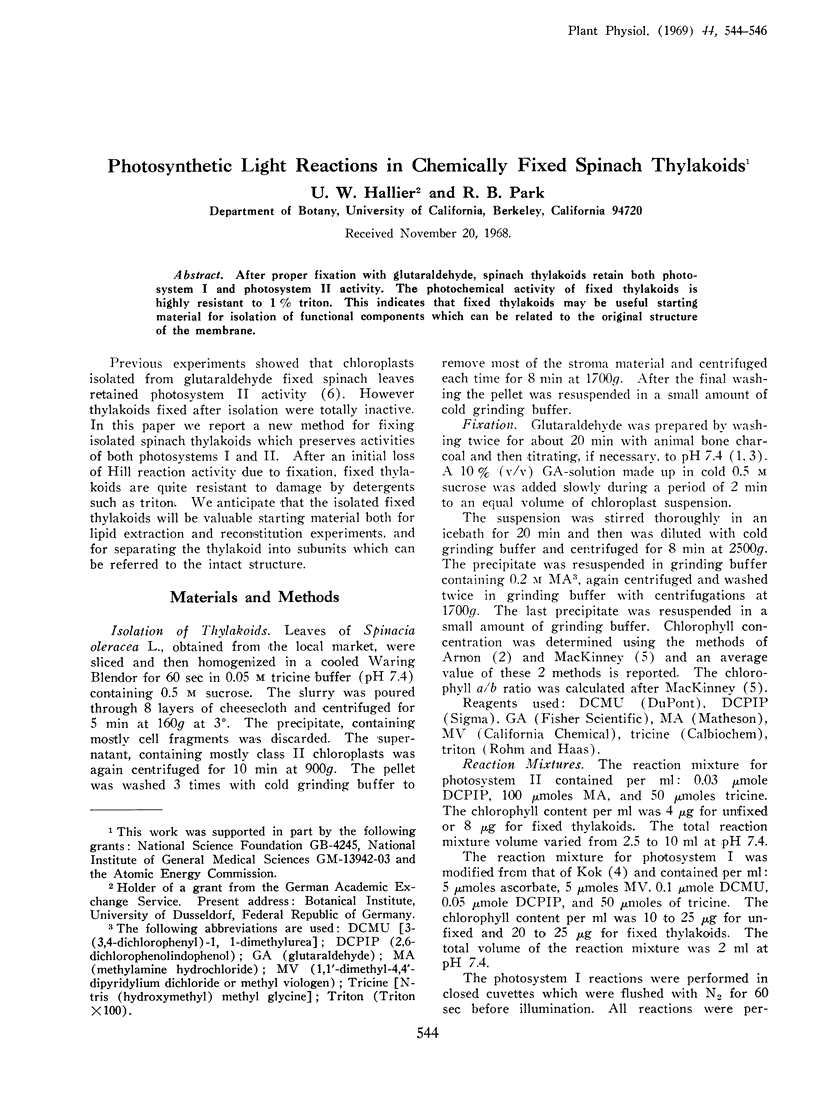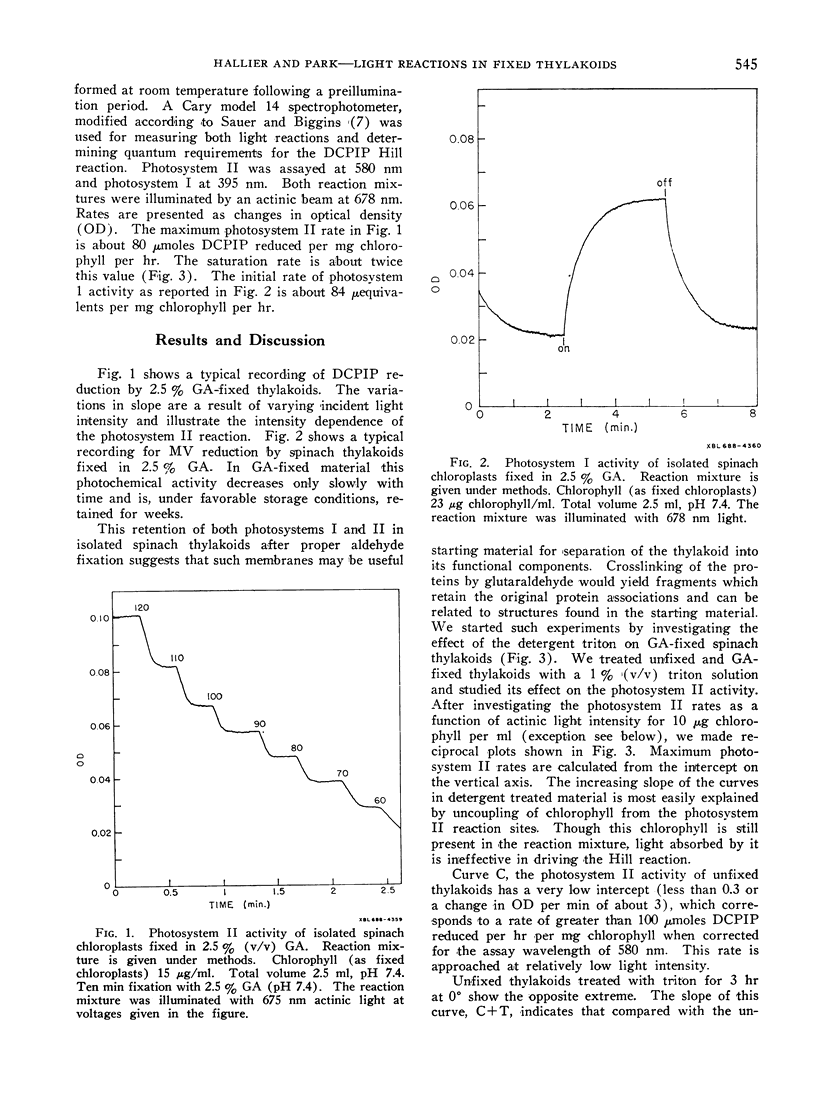Abstract
After proper fixation with glutaraldehyde, spinach thylakoids retain both photosystem I and photosystem II activity. The photochemical activity of fixed thylakoids is highly resistant to 1% triton. This indicates that fixed thylakoids may be useful starting material for isolation of functional components which can be related to the original structure of the membrane.
Full text
PDF


Selected References
These references are in PubMed. This may not be the complete list of references from this article.
- Anderson P. J. Purification and quantitation of glutaraldehyde and its effect on several enzyme activities in skeletal muscle. J Histochem Cytochem. 1967 Aug;15(11):652–661. doi: 10.1177/15.11.652. [DOI] [PubMed] [Google Scholar]
- Hallier U. W., Park R. B. Photosynthetic Light Reactions in Chemically Fixed Anacystis nidulans, Chlorella pyrenoidosa, and Porphyridium cruentum. Plant Physiol. 1969 Apr;44(4):535–539. doi: 10.1104/pp.44.4.535. [DOI] [PMC free article] [PubMed] [Google Scholar]
- Park R. B., Kelly J., Drury S., Sauer K. The Hill reaction of chloroplasts isolated from glutaraldehyde-fixed spinach leaves. Proc Natl Acad Sci U S A. 1966 May;55(5):1056–1062. doi: 10.1073/pnas.55.5.1056. [DOI] [PMC free article] [PubMed] [Google Scholar]
- Sauer K., Biggins J. Action spectra and quantum yields for nicotinamide--adenine dinucleotide phosphate reduction by chloroplasts. Biochim Biophys Acta. 1965 May 25;102(1):55–72. doi: 10.1016/0926-6585(65)90202-5. [DOI] [PubMed] [Google Scholar]


